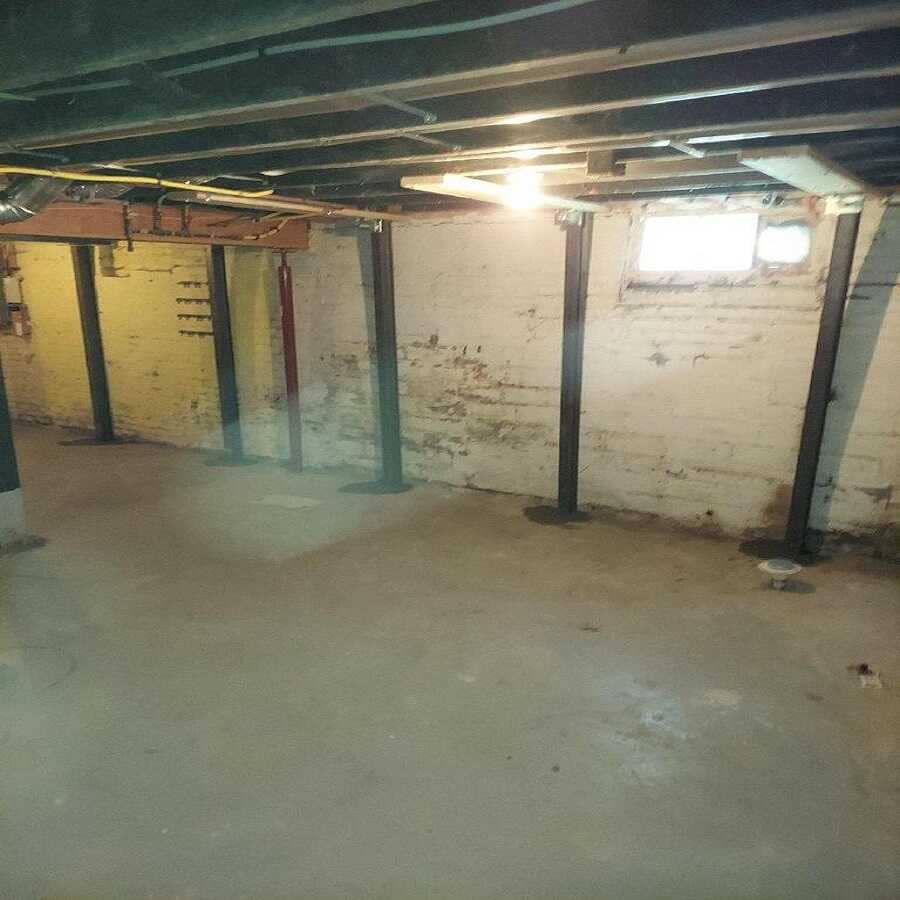The Facts About Best Basement Waterproofing Uncovered
The Facts About Best Basement Waterproofing Uncovered
Blog Article
Everything about Best Basement Waterproofing
Table of Contents6 Simple Techniques For Best Basement WaterproofingThe smart Trick of Best Basement Waterproofing That Nobody is DiscussingIndicators on Best Basement Waterproofing You Should KnowAll about Best Basement WaterproofingOur Best Basement Waterproofing Ideas
uses excavation techniques towards the base of the framework's foundation. involves removing dampness after it has gone into the basement. AdvantaClean's qualified professionals and specialists will situate the water resource. If wall or slab splits exist, we will certainly inject polyurethane and epoxies into the cracks and seal the compromise, protecting against additional wetness from going into.Proper grading around the home to direct dampness far from the framework. Putting up, repairing, or cleaning gutters and downspouts. Inside or outside waterproofing with filler, sealant, and/or waterproof paint. Installing basement air flow systems, conditioning systems, or basement dehumidifier systems to obtain water out of your cellar. Choosing AdvantaClean's cellar waterproofing services is a reliable means to deal with wetness and prevent mold and mildew from jeopardizing the framework of your home and the health and wellness of your family members.
If there's condensation outside of the aluminum foil, you have high moisture in your cellar. Repair it with a portable space dehumidifier or a whole-house humidifier system as opposed to waterproofing products. If the aluminum foil has condensation on the inside surface (beside the wall), the soil around your home may be naturally damp from a high water table or poor dirt drain.
You can waterproof simply your indoor walls, which might fix the trouble. Once they dry out, they stick completely to concrete and masonry wall surfaces.
Best Basement Waterproofing - Questions
Concrete water resistant finishings can't be applied to formerly repainted surfaces; inspect the label. Understood as densifiers, they are appropriate just for walls that have not been repainted or sealed.
But you comb, roll, or spray it on far more thickly one gallon covers simply 75 square feet, not the 300 square feet typical with standard paint. Water resistant paint is fine for do it yourself application. You can apply it over painted surfaces, and paint over it once it's healed (one gallon costs $37).
It can set you back $10,000 to $15,000, depending on the job needed (Best Basement Waterproofing). Outside waterproofing involves excavating all around the home to the complete depth of the structure wall surfaces, after that installing a water-proof coating or membrane topped by drainage panels.
4 Simple Techniques For Best Basement Waterproofing
We have actually all been captured in a storm with no umbrella or raincoat. And it's constantly a dish for calamity: everything's wet, your hairdo is ruined, and things are getting musty. A cellar without waterproofing is sort of like that. Minus discover this info here the wrecked hairstyle part. Your basement does not desire to experience a rainstorm without correct security just as long as you don't want to.

Outside waterproofing is a waterproofing method that entails sealing your home from the exterior. It's kind of like a moat around a castle. It includes excavating a trench around your whole house to the structure (concerning 8 to 10 feet down). The foundation wall surfaces are then cleaned, sealed, and covered with a water-proof membrane layer or sealer.
Best Basement Waterproofing for Beginners
It's a much more engaged procedure that needs digging up your backyard, which is costly and time-consuming. Outside waterproofing involves removing whatever surrounding the house, including verandas, driveways, sidewalks, landscape design, air conditioning devices, decks, and more. If any one of the job was done incorrectly and water is still entering your basement, useful reference there isn't much you can do to remedy or fix it.
Interior cellar waterproofing includes waterproofing from the inside. Any water that leakages into your basement is redirected prior to it touches your floor.
It's an effective method to water-proof your cellar. The drawback of indoor cellar waterproofing mainly has to do with the installation process. This method requires saved things, furnishings, and integrated shelving or cabinets to be relocated from touching the basement walls. And throughout setup, your basement can't be made use of. The greatest distinction between both approaches is this: Exterior waterproofing is a preventative option and indoor waterproofing is a corrective solution.
Indicators on Best Basement Waterproofing You Should Know
To conclude, outside and indoor basement waterproofing are both effective techniques of protecting your home from water damages. Exterior waterproofing creates an obstacle that prevents water from entering your home, while interior waterproofing redirects water that does enter your home. And it is essential to note that outside waterproofing is a costly and disruptive setup procedure when contrasted to indoor waterproofing.
Whichever method you select, make sure you choose a reputable and credible contractor for the work. If you have any type of questions his comment is here concerning basement waterproofing, please get to out to us.
You can complete our type right here. Best Basement Waterproofing, begin a chat in the bottom right-hand edge, or call us at 1-800-827-0702
Report this page